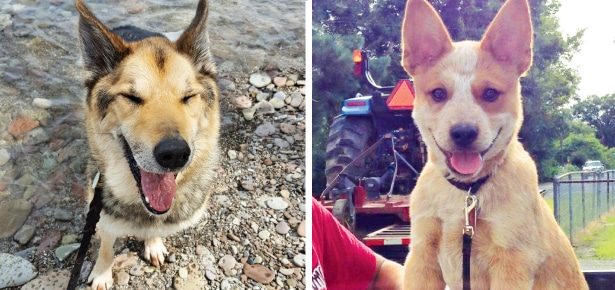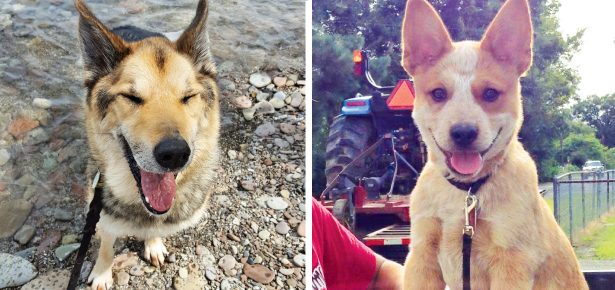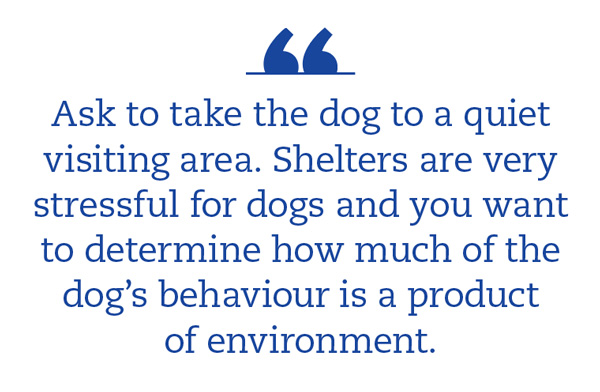

Top 4 tests when choosing a shelter dog
Rescue dog matchmaking: 4 important tests your future family member should pass
You’ve decided there’s room in your house and your heart for a rescue dog, which is wonderful! Shelters and rescue organizations are brimming with dogs waiting for good homes. Literally. A terrible statistic: an estimated two million animals die in U.S. shelters each year. By adopting, you get an awesome new friend AND you’ll be saving a life! But before you make the leap, please be sure you’re making a good match. When you see all those dogs, it’s easy to let your emotions override your brain. Of course you need to fall in love, but making a hasty decision can lead to broken hearts (and sometimes worse for the returned dog who faces slimmer faces of re-adoption). Ask anyone who’s brought home what they thought was a laidback lap dog and ended up with a whirling dervish—by using both your heart and your head, you’re more likely to make a great match. Here are four tests to help you determine which lucky dog should come home with you.
1. Sociability With People
This is one of the most important tests. A dog that is social with people is friendly, outgoing, and wants your attention. Before you say yes or no to any favourite, try this exercise:
Ask to take the dog to a quiet visiting area. Shelters are very stressful for dogs and you want to determine how much of the dog’s behaviour is a product of environment. Have a seat and just hang out. What does the dog do?
A. He engages with you and wants you to pet him. He may be interested in his environment, but his main priority is getting your attention. When you pet him, he enjoys it.
B. He barely offers you a passing glance. He is very interested in smelling the room. If you pet him he’ll wag his tail and maybe briefly look at you, but mostly he just explores.
C. He cowers from you and does not seek physical affection. He does not make eye contact.
You want the A dog. This dog is social. He enjoys the company of people and wants to interact with you. This is going to be a dog that is invested in you and wants to be a companion.
The B dog is not as social, and will likely be harder to work with—he’s not as interested in making friends with you. The C dog is going to be a project. If the dog continues to act terrified after some quiet time with you, you may want to think twice unless you are a very experienced dog person. Fear can lead to aggression and a terrified dog that feels trapped can bite. A traumatized dog needs a lot of help to recover, which takes time, finances, and commitment. With effort, the C dog can still be a great pet, just know you have a lot of work ahead of you.
If a dog growls or snaps at you, avoids your petting, or tries to escape your touch, keep looking unless you have the time and resources to devote. Ideally, you want a dog that makes warm eye contact with you. He should seek your petting, lean into your touch, and approach you with a curved posture. Wiggly butts are great!
2. Sociability With Other Dogs/Animals
Do you have an existing dog at home or will your new dog need to be around other dogs? Most dogs need to be ok encountering other dogs at least in the neighbourhood. How is your candidate? Ask the shelter, rescue organization or foster family for specific details. Some dogs, for example, get along with dogs of their own breed, but not others. Some are ok with certain sized dogs but not others. You may not need a social butterfly, but unless you’re experienced/okay with an only-dog, you want to be sure you’re not bringing home a dog that has aggression issues with other dogs.

Here’s an exercise to determine if your dog and the potential adoptee will get along (note this assumes your dog already loves other dogs and has no reactivity issues):
It’s good to have a helper. In the neutral territory (i.e. not home turf), start walking the two dogs parallel to each other. Avoid nose-to-nose greetings, as this can cause tension. If the dogs turn towards each other to sniff each other that’s ok; you just want to avoid them coming at each other straight on. Have treats with you and reward the dogs for good behaviour. Note what happens on this co-walk:
A. The dogs get wiggly and curvy. They may take turns bowing to each other. One may make himself smaller and try to lick the other dog under the chin. Tails may be high. Overall, it looks like they could be friends.
B. The dogs show some interest in each other but mostly enjoy the walk.
C. One or both dogs actively try to avoid the other dog. One may lift his lip or growl.
A or B is the way to go here. Even if the dogs seem friendly towards each other, know that it can still take some work to acclimate a new member into the family. Some folks have thought their dog was ok with a newcomer at the shelter, only to have a terrible dogfight in the car on the way home.
What about other animals that may be in your life? Kitty isn’t going to appreciate you bringing home a dog that chases her or, heaven forbid, wants to make her a snack! Make sure any dog you bring home can be a friend to all your pets.
3. Health
Is the dog healthy? Does he have any special needs? If so, are you able to handle them? Be honest with yourself. It’s ok if you need to pass up a dog that has a lot of medical issues. Not everyone can handle that, emotionally or financially. On the other hand, if you’re up for adopting a dog that needs regular medication or has a challenging physical condition, go for it. Special needs dogs can make amazing pets. Just be sure you understand what you’re getting into first. Talk to your veterinarian about any specific conditions a rescue dog may have to find out exactly what kind of care commitment he’ll need.
4. Lifestyle
Are you an active person who wants to include a canine buddy on your adventures? Or do you really want a couch potato to snuggle with you on the couch? This is another time to take an honest look in the mirror. Often, poor matches exist simply because people chose a dog with a different energy level than they want. If you’re a laid back person, a dog that runs circles around your living room may drive you crazy. If you want a running partner, choose a dog that is physically sound and eager to cover some miles with you. Think about the different activities you want to share with your dog. What’s the best dog to fit that picture? Try this exercise:
Take the dog on a walk. Have some delicious treats to reward him for good behaviour. He may or may not be trained to walk nicely on leash, but put that aside for a minute. What is his activity level?
A. He’s all over the place! Everything is exciting to him, from leaves to birds to traffic. He’s not scared, just eager to explore.
B. He walks calmly by your side, interested in the environment but content to keep pace with you.
C. He walks for a bit, then lies down or sits and refuses to budge.
A might be the running partner you want. B sounds ideal for someone who likes to walk, but doesn’t need an athletic partner. C could have a medical issue preventing him from exerting himself, or he may actually be frightened of his environment. Proceed with caution with this one.
There are plenty of stories about people who walked into a shelter and successfully adopted the first dog they saw. There are just as many stories about matches that didn’t have a happy ending. This may be why your future furry friend ended up in rescue in the first place. Is it work to find the right one? Sure it is. But it’s worth it! If your first attempts don’t turn up a perfect match, don’t lose hope. He or she is out there. And when you find that perfect dog for you, both your head and your heart will be in the right place.
Make sure your home is prepared for your new fluffy friend with these Modern Dog-approved new dog prep products!
Join the newsletter and never miss out on dog content again!
"*" indicates required fields
By clicking the arrow, you agree to our web Terms of Use and Privacy & Cookie Policy. Easy unsubscribe links are provided in every email.